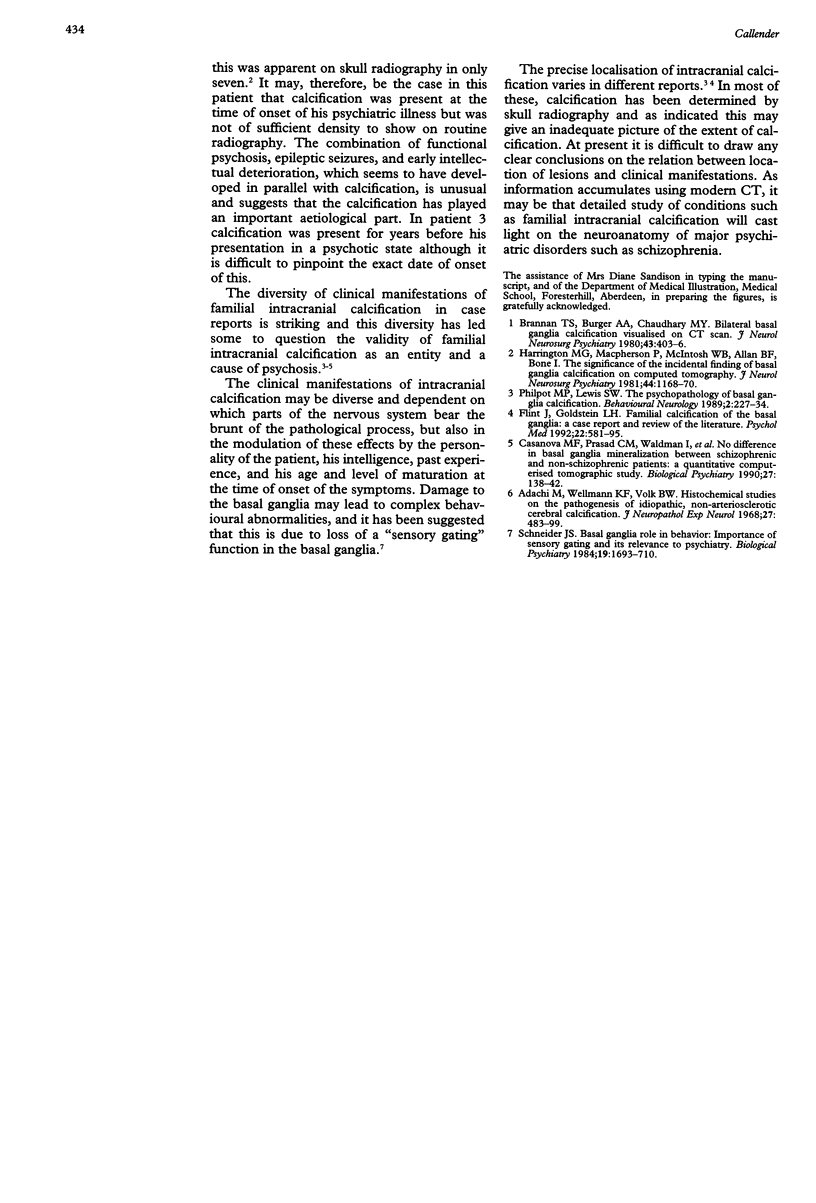Abstract
The clinical features and long term outcome of familial idiopathic intracranial calcification in three members of one family are described. The illness presented as psychiatric disorder in all patients, and in one patient, epilepsy and intellectual deterioration were later manifestations. Skull radiographs and CT were performed sequentially, in one patient, over a 22 year period and, in another, CT was carried out eight years apart. In neither patient was there any evidence of progression of calcification.
Full text
PDF


Images in this article
Selected References
These references are in PubMed. This may not be the complete list of references from this article.
- Brannan T. S., Burger A. A., Chaudhary M. Y. Bilateral basal ganglia calcifications visualised on CT scan. J Neurol Neurosurg Psychiatry. 1980 May;43(5):403–406. doi: 10.1136/jnnp.43.5.403. [DOI] [PMC free article] [PubMed] [Google Scholar]
- Casanova M. F., Prasad C. M., Waldman I., Illowsky B., Stein B., Weinberger D. R., Kleinman J. B. No difference in basal ganglia mineralization between schizophrenic and nonschizophrenic patients: a quantitative computerized tomographic study. Biol Psychiatry. 1990 Jan 15;27(2):138–142. doi: 10.1016/0006-3223(90)90643-g. [DOI] [PubMed] [Google Scholar]
- Flint J., Goldstein L. H. Familial calcification of the basal ganglia: a case report and review of the literature. Psychol Med. 1992 Aug;22(3):581–595. doi: 10.1017/s0033291700038046. [DOI] [PubMed] [Google Scholar]
- Harrington M. G., Macpherson P., McIntosh W. B., Allam B. F., Bone I. The significance of the incidental finding of basal ganglia calcification on computed tomography. J Neurol Neurosurg Psychiatry. 1981 Dec;44(12):1168–1170. doi: 10.1136/jnnp.44.12.1168. [DOI] [PMC free article] [PubMed] [Google Scholar]
- Schneider J. S. Basal ganglia role in behavior: importance of sensory gating and its relevance to psychiatry. Biol Psychiatry. 1984 Dec;19(12):1693–1710. [PubMed] [Google Scholar]



